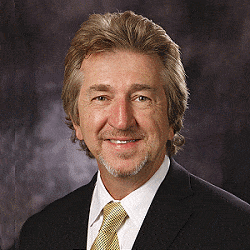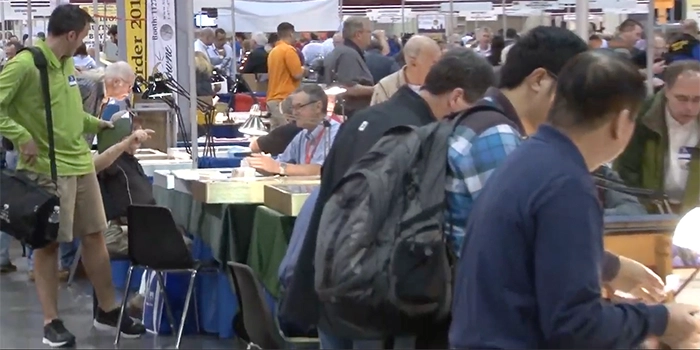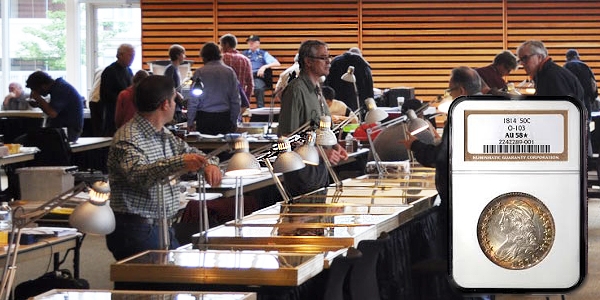By Jeff Garrett for NGC (Numismatic Guaranty Corporation) ……
 Based on many conversations and observations in the last several months, the premise of the title for this article would be debatable at best. A few coin shows have stumbled recently, and social media is rife with grumbling from dealers who are shunning such events. The problems these shows are having are complex, but there are plenty of reasons to remain optimistic about the future of coin shows in general.
Based on many conversations and observations in the last several months, the premise of the title for this article would be debatable at best. A few coin shows have stumbled recently, and social media is rife with grumbling from dealers who are shunning such events. The problems these shows are having are complex, but there are plenty of reasons to remain optimistic about the future of coin shows in general.
It should first be noted that not all coin shows are struggling. The recently completed Florida United Numismatists (FUN) show was a smashing success. Despite a snafu opening the doors on time for set-up, the show experienced huge crowds from start to finish. The buzz in the hall for setup was an exciting start to the numismatic year for 2023. Most dealers experienced brisk sales, with many new faces seen buying coins. My only complaint was the difficulty trying to navigate a 600-plus table event. By Saturday, there were still rows that I hadn’t visited. The FOMO was killing me!
The reasons some shows are succeeding and others are faltering can be complicated. Many believe the internet has been a game changer for rare coin conventions. The theory is that collectors don’t need to attend a coin show when coins can so easily be found online. There is much truth to the fact that at any time of the day or night, you can shop for rare coins around the country. Why go to a coin show when so much is available at the push of a button?
I actually believe the opposite is true about the internet’s impact on coin shows. The internet has created millions of new coin collectors. These collectors may start their collections online but soon will find the idea of attending an actual coin show to be more exciting.

My analogy for this is the spread of legalized gambling in the United States. Many predicted that a casino in every large city would destroy the gaming industry in Las Vegas. However, the opposite proved true, as local casinos introduced millions to the excitement of casino gambling, which caused these folks to want to experience the “big time” — a trip to Las Vegas! I hope that’s how many new collectors feel about going to a major convention.
Some shows suffer simply because of where they fall on the calendar. Too many shows in one month and those at the end of the month usually result in light attendance. Others have difficulty because of the location where the event is being held. For years, coin shows in downtown St. Louis were “must-attend” events. The Silver Dollar Show held there each fall was huge. However, the decline of downtown St. Louis and the subsequent move of the show to a smaller venue has caused it to shrink considerably. The show is still held each year (and I faithfully attend), but now, due to changing circumstances, it is a much smaller event than in the past.
Other major cities have experienced a general decline, as well. Some dealers are concerned about safety, especially considering a recent spate of robberies at major coin shows. The decline of the airline industry has also had a major impact on some shows. Many smaller market cities have seen serious cutbacks in air service, meaning fewer and more expensive flights on smaller airplanes. Coin dealers do not travel light, and most hate going to a show if it means a commuter flight.
Another issue that coin show promoters need to address is the aging of the dealer population. A recent coin show had a few empty tables of recently deceased coin dealers left vacant. It’s nice to see the memorial, but it’s a stark reminder of an aging demographic for dealers who set up at shows.
Interestingly, there are a lot of young dealers prowling the bourse floor doing tons of business. For some reason, they don’t see the need to be tied down to a table. Show promoters should work to offer tables that suit their needs; maybe more share opportunities or discounts would draw them in. Older and more established dealers need to make the young dealers understand the importance of supporting events (and media) that help them make a living. None of us should take coin shows for granted.
Despite all of these headwinds, most coin shows are generally in good health. If a coin show is run well, collectors and the general public will attend. I have a saying that I repeat often: “Anytime I get concerned about the health of the market, I look at the thousands of collectors at a coin show and feel better.”
 Most collectors love the excitement of going to a coin show and actually seeing and holding the coins they collect. Where else can you go and hold museum-quality objects in your hands? Photographs on the internet have improved, but nothing beats seeing real coins in person. Coin shows also present an incredible educational opportunity for collectors. They can see a vast array of rare coins on display, look at educational exhibits, and perhaps attend an interesting seminar.
Most collectors love the excitement of going to a coin show and actually seeing and holding the coins they collect. Where else can you go and hold museum-quality objects in your hands? Photographs on the internet have improved, but nothing beats seeing real coins in person. Coin shows also present an incredible educational opportunity for collectors. They can see a vast array of rare coins on display, look at educational exhibits, and perhaps attend an interesting seminar.
Seeing a great rare coin is exciting, but for many who attend coin shows, it is the people who make it special. Where else can you go and see the legends of your hobby walking about? In most cases, they are very accessible to anyone attending. Coin shows are where many long-term relationships are developed. Over the years, these relationships will probably be the most important thing you might gain from attending. I have attended two to three coin shows every month for almost 40 years. If you do the math, that adds up to a lot of coin shows! Most of my closest personal relationships started at coin shows.
As I have stated many times in this column, finding a mentor to assist you in your collecting pursuits is very important. Coin shows are an excellent place to find a dealer or advanced collector that will share their years of knowledge with you. Regardless of what series you collect, there will probably be someone there that specializes in the coins you are seeking for your collection.
One piece of advice for anyone new to attending coin shows? Try to attend early! Coin shows are very front-loaded as far as business is concerned. More coins trade in the first few hours than during the rest of the event combined. Dealers are eager to purchase fresh coins as they are placed in the showcases. During a good market, the bourse floor will be abuzz with activity during the setup period. As this business settles down, many dealers actually start to leave. By Friday afternoon, some of the largest dealers are headed to the airport.

This situation causes much consternation for collectors and show promoters. Promoter attempts to make dealers stay longer have met with limited success. Remember, many dealers like myself attend at least 25 to 30 coin shows a year. Being away from home most weekends would be impossible for anyone trying to maintain a family life.
I hope to meet anyone reading this article at the next major coin show. Just be sure to be there by Friday for the best experience!
* * *





